True Detective: Detective Hot and Detective Cold
on April 19, 2014 at 1033This is part two of a six-part series about True Detective. Here is the entire essay.
This shot is in the opening credits; this is one of the iconic views of the series. It is a picture of our fearless heroes as they urinate.
Yep, they’re pissing. Watch the part if you don’t believe me — seventeen minutes into episode three — there are even sound effects.
So that’s the kind of show this is, where the iconic shot is of the characters pissing. The annoyingly, obnoxiously, provocatively honest type of show. And it’s a show about men.
Think about it — the first time you meet Marty, he tells you exactly who he is.
Leaving aside how clear his anal fixation is made in the show (and I hope we do get around to that particular issue), leaving aside the show’s repeated castration anxiety, leaving aside whether or not this is a fit subject for a piece of TV, 1995 Marty’s a dick. Literally. He has no conscience to speak of at this time, he’s out for fun and fuckin’.
2002 Marty’s a dick too, but he’s gone soft. That’s why they call him the human tampon. Why, he is even buying tampons in bulk:
But in 2012 he gets his mojo back, because guns, baby…..ah, the unwritten rules of American television. It’s interesting that Marty does the lion’s share of gunplay in the series. He shoots LeDoux tonce and Childress three times, and we see it happen every time. When he shoots LeDoux boy do we get a good look. I would like to think that is an accurate depiction of severe head trauma, so that I know what I hope to never see in real life.
Rust’s a more complicated case. He pulls his gun twice (on DeWall and Childress), doesn’t take the shot either time (they both run away, which I understand is difficult to do because bullets run faster than people), and he only gets around to shooting Childress after extreme headbutting has failed. Marty shoots Childress too, but in this show the head shot’s the only true stopper.
That’s pretty much it for gunplay in the series, except for the sheer mayhem of the drug raid in episode 04 where everybody’s shooting everybody except for Rust, who chooses to punch his way out of problems. He also uses the AK-47 at LeDoux’s hideout, but only to cover up the fact that he’s crying.
That’s the only time I can think of that Rust is shown firing a gun on the show.
So Marty’s a dick. And Rust is all head. This is a superficial observation that has been multiplied through every layer of this story, as only life and art can do. In every way we are shown that Marty Hart is like a penis and Rust is like a brain. What does it mean? Well, if I could tell you then Pizzolatto and Fukunaga and all the other people involved would not have to go through so much effort to create this myth in order to tell you about it. It’s too deep for a single sentence in a blog post.
Most people think of a story as a gem or a stick of wood or something that is. It sits there on the ground and you can appreciate it or you can not.
This is not so.
A story is a machine that creates myth, and the motive power is your attention. When you watch a show, when you read a story, the imaginary gears do grind, and it takes your attention and patterns it and influences it and creates something that is, hopefully, meaningful to you. The myths — the shadows thrown by these archetypes and universal situations — are supposed to get into your mental operating system and help you in some way. You try pick the machines that produce the exact mental effect that you want, but it’s far from a science. More of an art.
By taking a superficial observation like “Marty’s a cop and like many cops he’s a dick and like many dicks he’s obsessed with vaginas and anuses and fears of castration” and multiplying it on every level of the story, a resonant effect is created. You don’t have to know exactly what it means to create it; in fact, you create it because you want to know what it means. Marty’s a dick. He’s a dick in every way, every time. He does, inside the story, what a dick would metaphorically do if it was a walking talking person. This is a power of myth.
What does this mean? Let’s make it and find out. Let’s build the machine and run some human thoughts through it and see what we get. And I’m not exaggerating here; this is exactly what happens. Artists, filmmakers, and writers are technicians. They are technicians who create thought. Repetition of ideas in different modes is one of the basic techniques. They don’t know what result the machine is going to spit out before they build it — if they did, why would they bother building it?
True Detective is, to a large degree, a critique of men. It’s a critique of its audience. It’s a critique of the sort of men who would watch a show called True Detective.
A lot of the accusations of sexism against this show spring from this, because it’s a powerfully male show. It’s a show about men, and how men perceive women, and how men fail to understand women, This is a show that was custom-designed for two kinds of folk: stupid men and smart people.
Genre
True Detective does something that I think I admire. It is an honest show. It is truly a show that you would expect to see if you were to see the words “True Detective.” It takes its name from an old pulp magazine and it fulfills that promise. When you watch this show you are watching two shows at once, and one of those shows is totally and completely in its genre.
I think this might be great. I’m not positive. There are movies out there that critique their audiences with a wink and a nod, movies like Starship Troopers and The Shining. Those movies have multifold joys for intellectual audiences, who can’t really enjoy an action movie without somebody there telling them it’s okay to enjoy the blood and callous disregard for consequences. Smart people love Starship Troopers because it’s an idiotic film made in a really smart way and it’s nudging them in the ribs the whole time; “See how dumb this is? Can you believe people really believe this stuff?” And that’s cool, and I like it. I like The Shining, I get to watch my movie about the haunted hotel and think deep thoughts about how historical responsibility is like a haunted hotel.
But let’s face it, we all know why Stephen King didn’t like Kubrick’s version of The Shining. It’s because King was in the book, as both the boy in the man, and both the boy and the man in the movie have been transformed into submoronic cavemen who can’t write books too good.
The wink/nod movies, they have the unfortunate effect of pissing the regular audience off. Your average fratboy can’t tell why Mazzy Star’s “Fade Into You” is playing during the awesome fistfight scene, but he knows that they’re making fun of him.
Now, there are other works that take the high road. Movies like Observe and Report and 24 never break character ever. They tell the story exactly like you would expect the story to be told, all the way to the end. It’s pretty obvious, when I’m looking at the movies with my former-film-student laser brain, that the filmmakers have something to say about what they’re saying. The ending of Observe and Report isn’t a dream sequence, it isn’t a fantasy, it’s a movie. It’s as if the movie was written by the character that the movie is about, and he gets his happy ending in spite of the fact that it’s heartbreakingly obvious that it’s impossible. The movie does not make fun of him for wanting and needing a movie. Myth is for everyone, even the George Zimmermans among us, and Observe and Report has the courage, the decency, and the world-gnawing cynicism to give it to them.
Taxi Driver and King of Comedy perfectly straddle this divide. Watch Taxi Driver…if you’re a tough fella, this is a good movie! It’s about a shrimp who has some problems but he eventually shoots the right bad guy and everything is great. But hey, it sorta seemed like the ending….maybe……might not be real. Like the ending might be a little too good. Then you watch King of Comedy and you realize, yeah. That’s a dream. And Taxi Driver was a dream too.
Bad Lieutenant: Port of Call New Orleans….who knows with that movie. At some point the narrative just…slips away.
True Detective is in the second camp. It is its genre. It is a buddy cop movie about two men who unite to take down a deranged serial killer or two, exactly like Se7en, except this one goes to 11. They’re fighting….multiple killers! Serial killers! In a cult! A powerful highly-placed government cult! That rapes! And kills! Women! Poor women! Girls! Little Girls! And then videotapes it! And it’s been going on for decades! And they do weird things with the corpses! Oh and also incest! And did I mention drug dealers!
Our culture simply does not have any more exclamation points to give. We honestly cannot imagine anything worse than what happens in True Detective, short of genocide. The government pedophile rape cult is the single biggest American bugaboo there is; it pushes all the buttons, in order. It’s missing….cannibalism. Cannibalism and drunk driving. And dying alone in a nursing home, and home invasion. I really can’t think of any other American fears. Snakes.
There’s season two for all that. The important thing here is that they gave us the worst crime our culture can reasonably imagine. Here is the Se7en to end all Se7ens. The serial killer lair has been radically expanded; he even has his own Civil War fort now! But he still kept all his crazy cool serial killer diaries:
They are not setting the controls for the heart of the sun by accident. It is “everything and the kitchen sink” storytelling and I do like it. It says “We have eight hours to finish this genre off; let’s do this.”
This is the movie that Martin Hart is in. He’s a regular joe who thinks with his regular dick, and besides being good at his job he is bad at everything else in his life. He is a hen-pecked husband with kids that are getting away from him and he’s going to soldier through (why doesn’t his family support him and appreciate him like they should?) and he’s going to get to the bottom of the Worst Crime Ever. Which he does, by doing Good Detective Work and Tracking The Villain To His Lair. And then, as a reward, he is Reunited With His Best Friend. Marty does not see anything supernatural because he is not in that movie. There is no giant CGI at the end because Marty was not in that movie, and this is Marty’s movie. This movie is for all the Martys who watch it, for all the men in the audience who don’t understand that their wives actually do understand them, they understand them all too well. He is meant to be all of them, he is all their little mistakes and their little errors and their bright, glistening rationalization, that They Are Good Guys Deep Down and At Least They’re Good At Their Jobs. I’ve thought several times, watching this show, that this is a bartender’s-eye view of the men. This show collects all the half-assed rationalizations, bullshit promises, and self-serving masturbatory blindness that one bartender has ever heard and puts them all in the character of Marty Hart.
And this is Marty’s big case, and Marty’s show, and there has been a principled decision by the authors of True Detective to let him have it. Nothing ever violates the buddy movie that he’s in. You could watch the movie like that and you’d be just fine. I’m not sure, but I bet this show is plenty popular in frat houses, military bases, firehouses, and all the other traditional male enclaves you can find. Not because those people are dumb, but there sure are dumb people among them, and True Detective offers something specifically for them and has the decency not to ridicule them for wanting it.
Now, as to the other detective, Rust Cohle. “Cold” of Detectives Hot and Cold. Rust never sleeps. Rust is the brilliant bastard bartender, aiding and abetting, guiding the drink to his lips and understanding that Marty doesn’t really understand, but he also trusts him. He gives him what he needs.
Cohle is the thought track. He’s the commentator. He’s not the heart of the story….that would be Detective Hart. He’s the mind, though.
And Marty’s prize, for going through the story, is to get to help to bring him back to full life.
The important thing is that he does not get in the way. He does not make fun of Marty, he does not do anything but make the story happen. He lets Marty and the audience have fun, and there’s nary a snigger or a smirk. That’s a fine line. I like that way of doing things a lot. It seems very profound to me.
True Detective is truly True Detective. That’s what I’m trying to tell you. You can have your badass action movie and your complex philosophical exegesis at the same time. Think of all the time you save! You’re improving your soul AND being entertained at the same time — it’s like reading in the bathtub!
See what I’m saying about a story that’s designed to do something?
So this is what I’m talking about when I say this show is aware of stories, of how stories work and what stories do, and it combines stories in a very specific way to create very specific, and as it happens emotionally resonant, effects.
So you’ve got the story, which is a detective story. And you’ve got the stories that are inside the story; the King in Yellow, the terrible way that drug cartels kill their victims, the serial killer who arranges his victims in bizarre rituals, all these things are deployed and arrayed. Let’s talk about the way the background comments on the story.
A Visual Bestiary
Part of the joy of this show is that the writer, director, production staff, and for all I know the caterers conspired together to tell a thematically coherent movie. This was not done in the usual way, by relying on an oracular David Lynch type to make everything fit just so, but by careful collaboration between a writer who wrote a script, a director that understood it, and a crew that made it happen. It’s not as much fun to play these games with other shows, because they aren’t aware, they don’t hang together, they contradict themselves. But True Detective takes the time to make everything clear, or close enough to everything that you can get the rest of the way there by yourself. Everything in the universe of this story bends itself to the investigation they are in, this discovery that they are on.
In this sense, from this perspective, the actors are guys who stand on a piece of tape and say some words. They create the story, they invite the story into existence, but we’re not exactly talking about them so far. All the driving-around scenes in this movie were shot in a studio in front of a green screen (that’s why you rarely see a shadow travel across their face in the car) and the perfectly moodly background was colored in with computers.
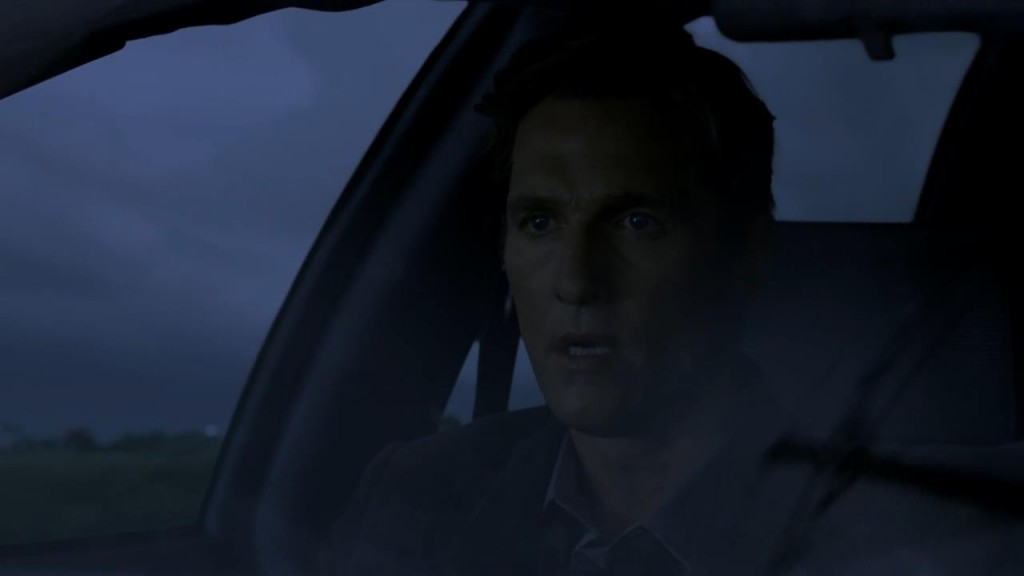
Would it surprise you to hear that the reflection of the telephone pole appears at the right moments to emphasize his words?
One of the main ways that this show tells you what’s going on is color, and I don’t mean any hippie whooo sense. I mean isolated patches of solid color, and they are everywhere in this show.
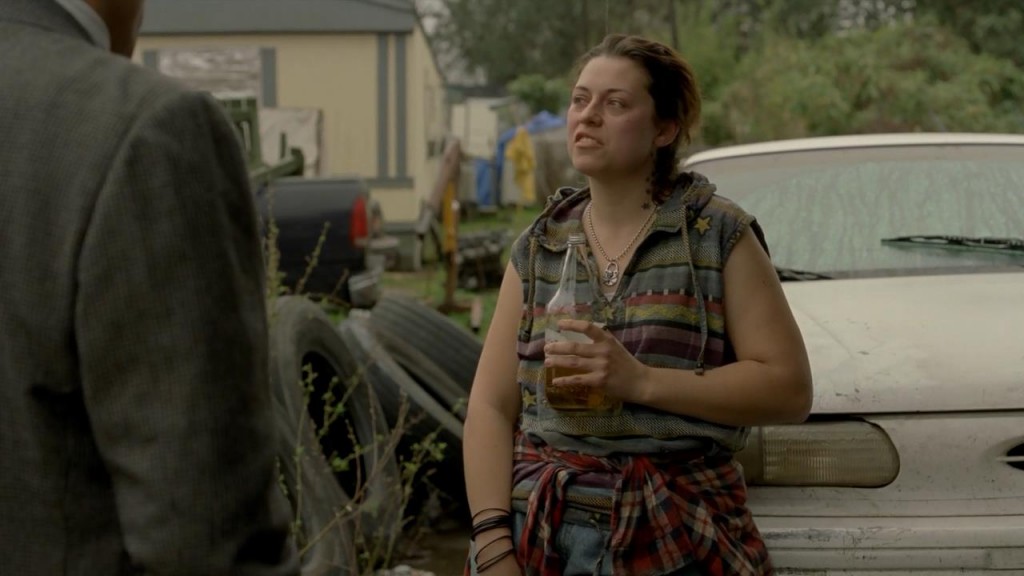
You mean to tell me it’s just a coincidence that those blue and yellow shirts are on that particular clothesline?
Another: pattern. Complicated, difficult people that Our Fearless Detectives cannot easily understand get patterned clothes and patterned backgrounds.
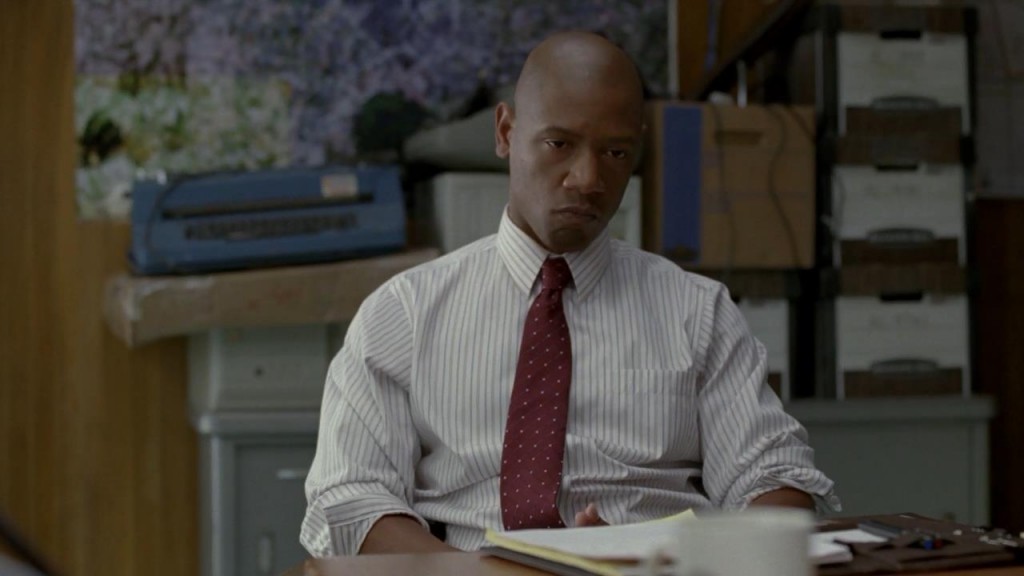
That map behind him is always on the wall but it only seems to get in the shot at certain specific times. More to come on this point.
Women are pretty much always wearing patterns in this show, which says a lot about the way that Rust and Marty relate to women.
There’s a lot going on with floral patterns, and flowers in general, and plants in general. Here are some examples of the use of thick vegetation.
Another is animals.
Another is birds.
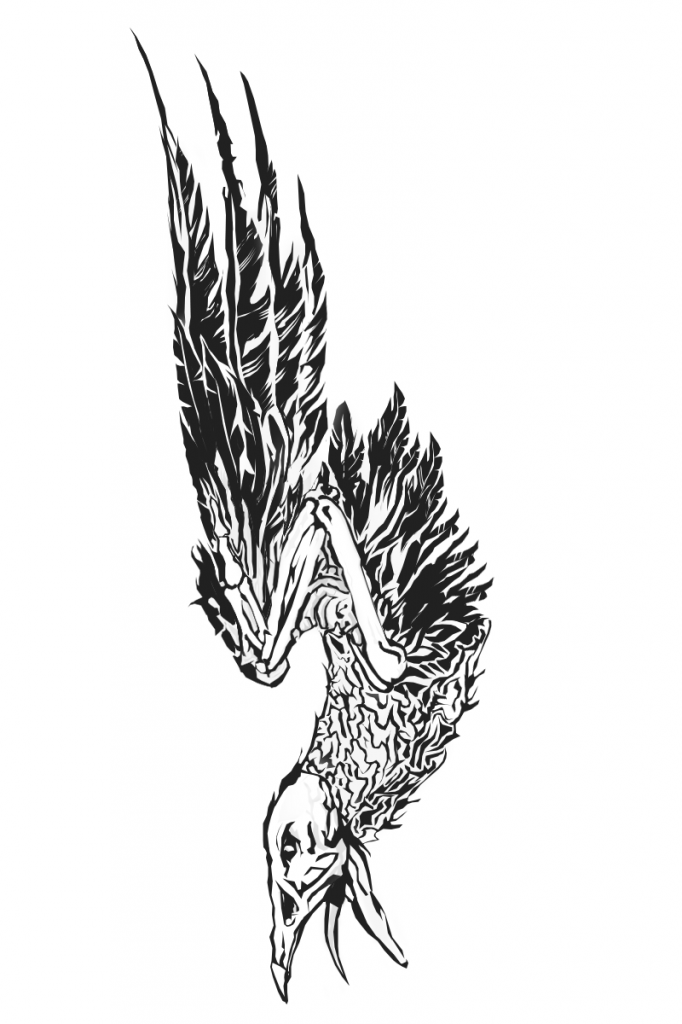
The tattoo on Rust’s arm. Maybe, just maybe, in difficult symbolic language, it represents how he feels about his dead daughter or something.
Seeing as it’s a bird and it’s dead.
Don’t say these things are too simple to be symbols, or “Well of course in Louisiana you’d find kudzu.” Of course. The creators knew that too, and chose to use it. They used their terrain, they used it well.
Look at that list:
solid colors
patterns
plants
animals
birds
Those are not complicated things! Anybody can do this stuff. It’s using the things around you to tell a story, and it’s a great way for the production staff to keep themselves interested as they try to figure out how to stuff a frame with information for eight hours straight better than anybody else ever. It’s a game. If you want to express that something is feminine and otherworldly, put a bird on it.
Of course it’s not fair to use the exact same symbol set as True Detective, but most of the stuff is pretty simple. Patches of solid blue equals “the job” or police work, you see that over and over. This show didn’t invent the association of blue and police. But you have to give them credit for assembling it into their bestiary of symbols.
This is one of my favorite shots in the series:
You might think this is weird, but this is the shot that made me write this essay. When I saw this I just started laughing. This is from the scene where Marty goes roller skating with his daughters; in just a second he’s going to emerge from that mist to have an uncomfortable and awkward conversation with Maggie.
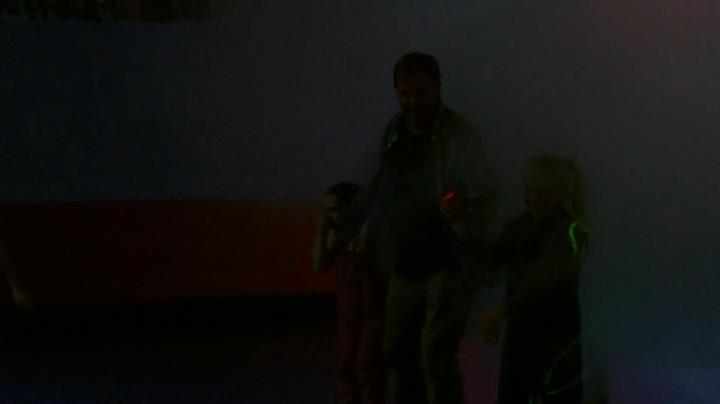
and it is of course interesting that the wildly green is on Audrey, but that may be reading too far into things.
This is a scene about Maggie’s reconciliation with fate, and a fate that includes Marty, not about her reconciliation with him. Red and green parallel paths — mixed signals — symbolically that’s about as clear as it gets. I’d been watching the growth of the symbolic language of the show with growing glee (and at the time I was more or less unaware of nearly all of it), and that shot was an unmistakable signal that yes, they were speaking this language.
I find it so refreshing, so utterly delightful that someone has a) figured out how to tell stories like this b) figured out how to get those stories made and c) figured out how to get paid. Tell your laser stories, sir! I’m all ears.
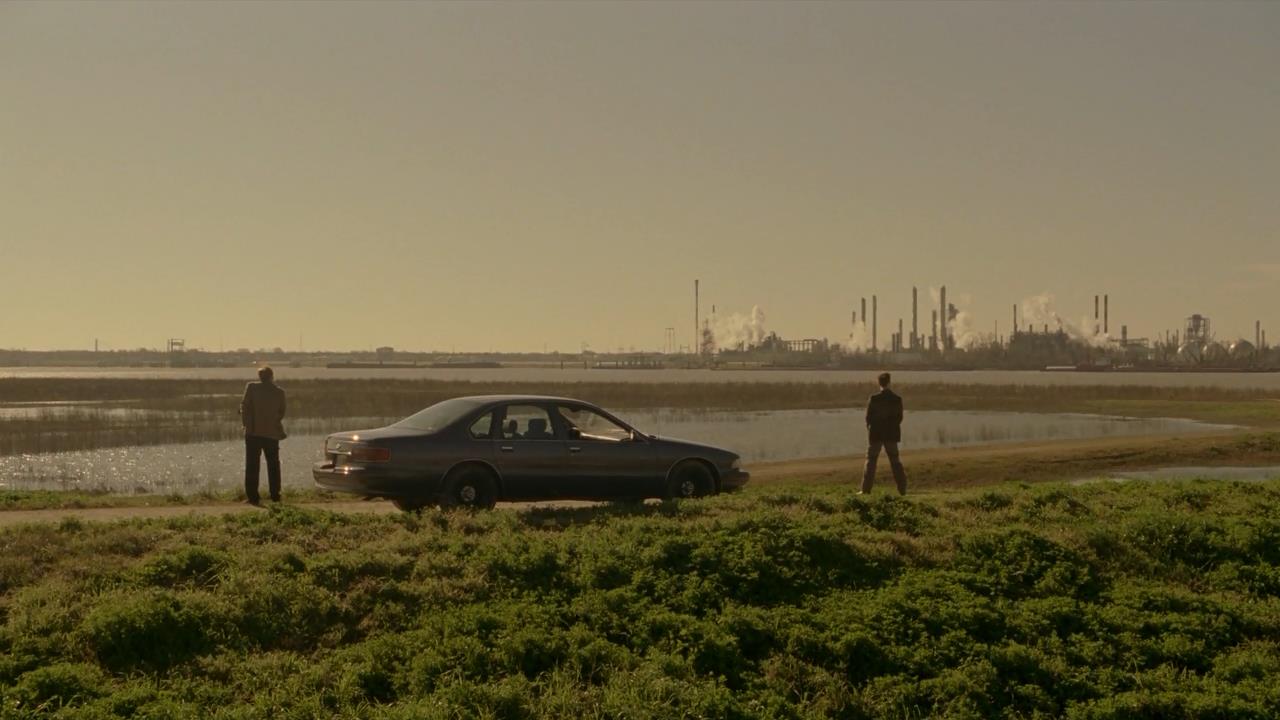
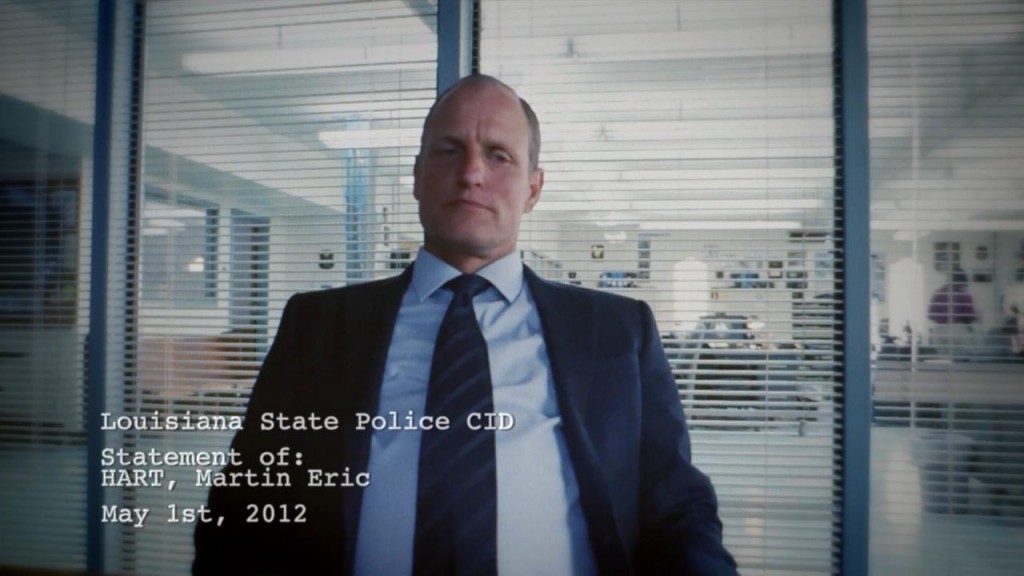
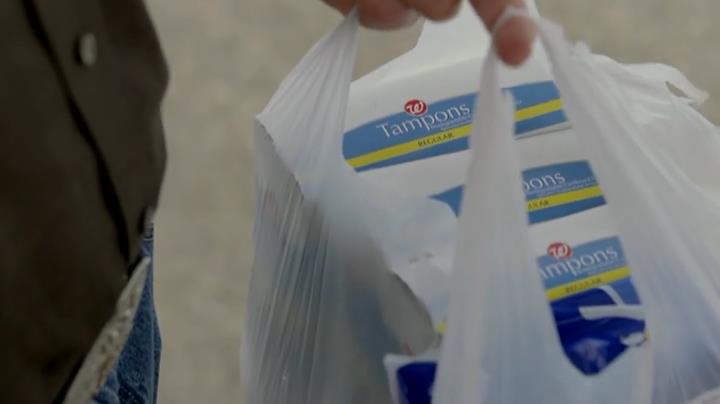
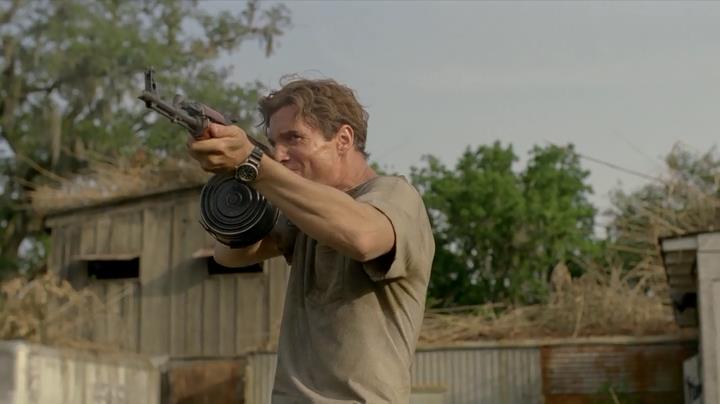
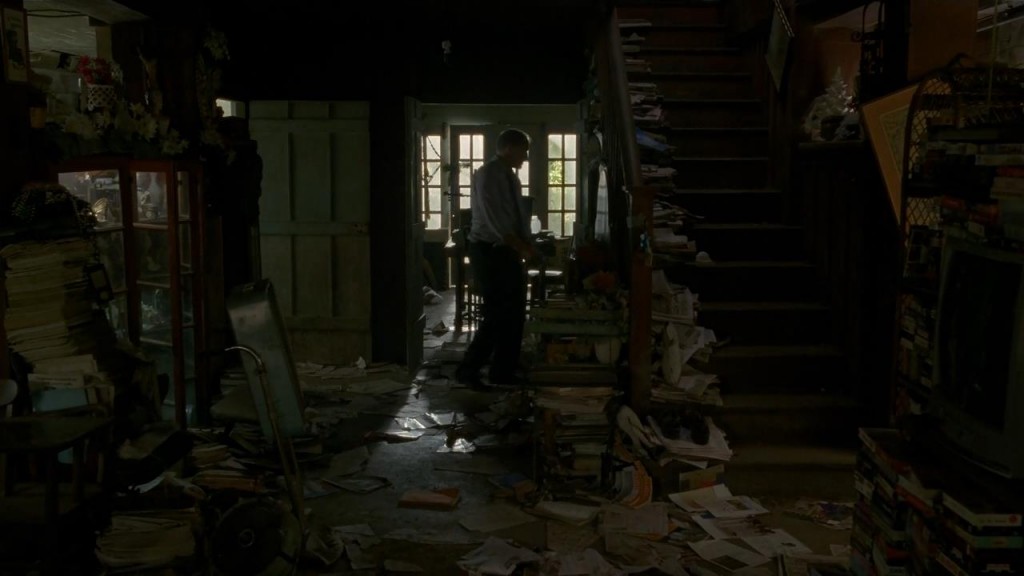
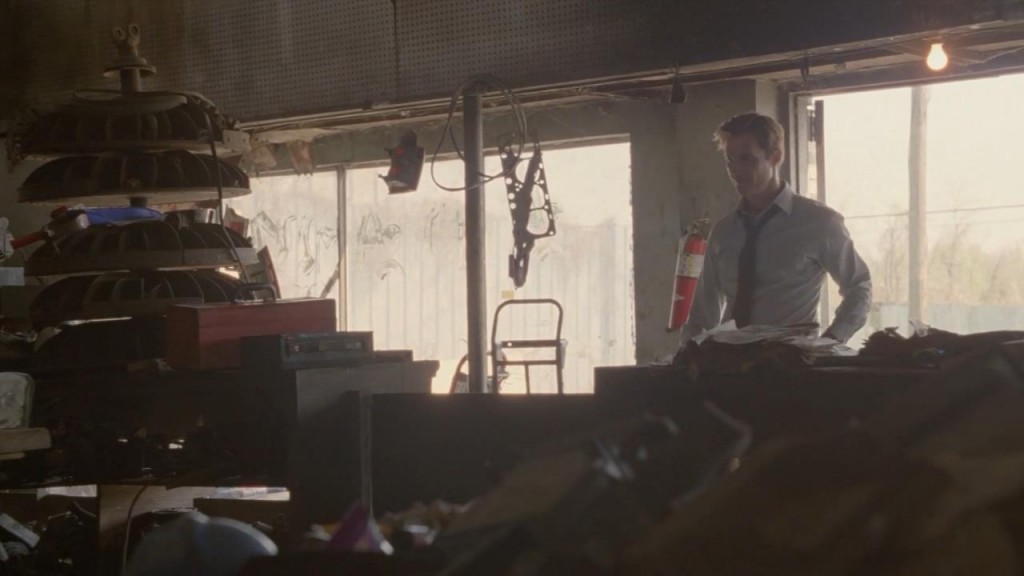
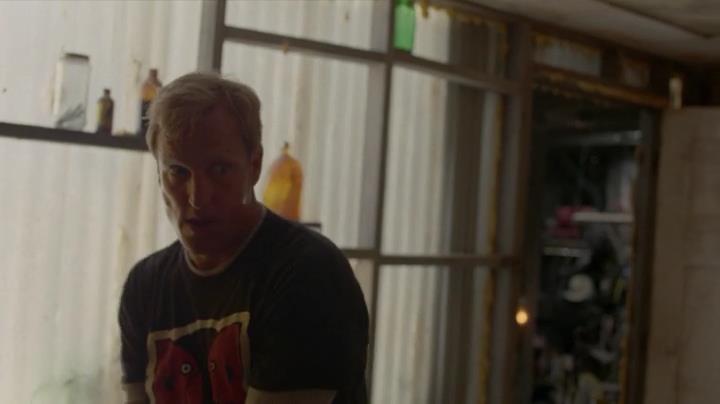
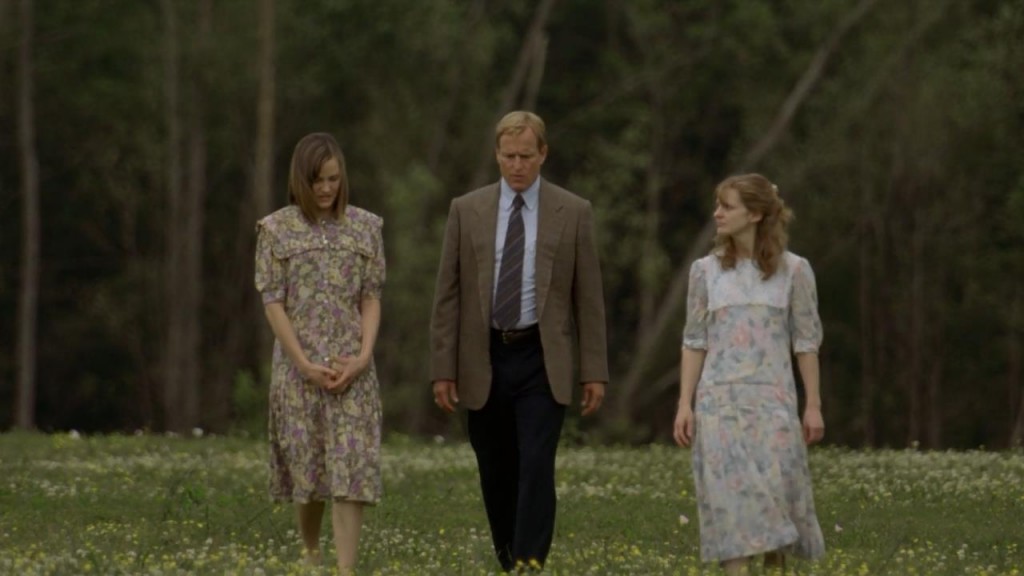
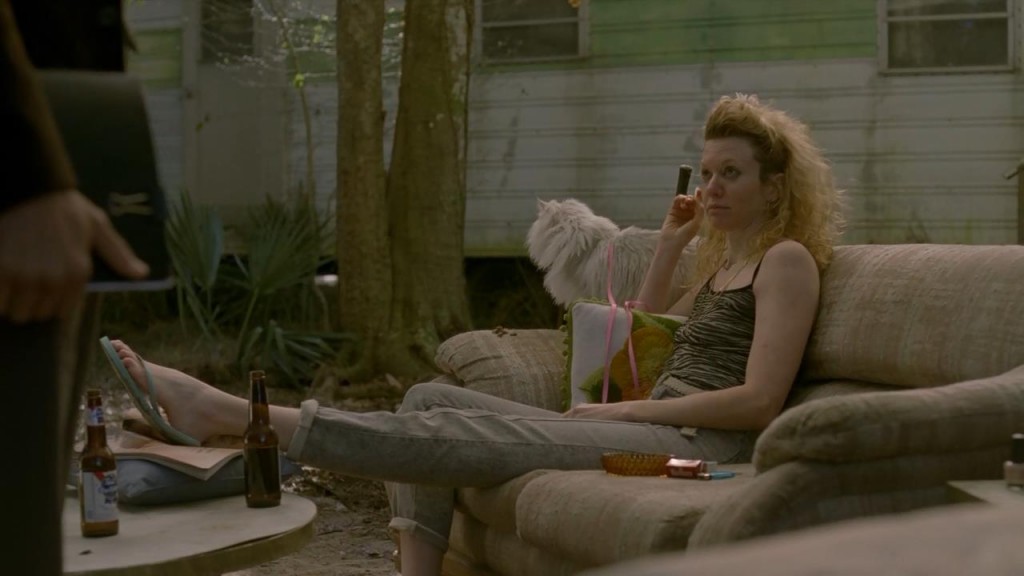
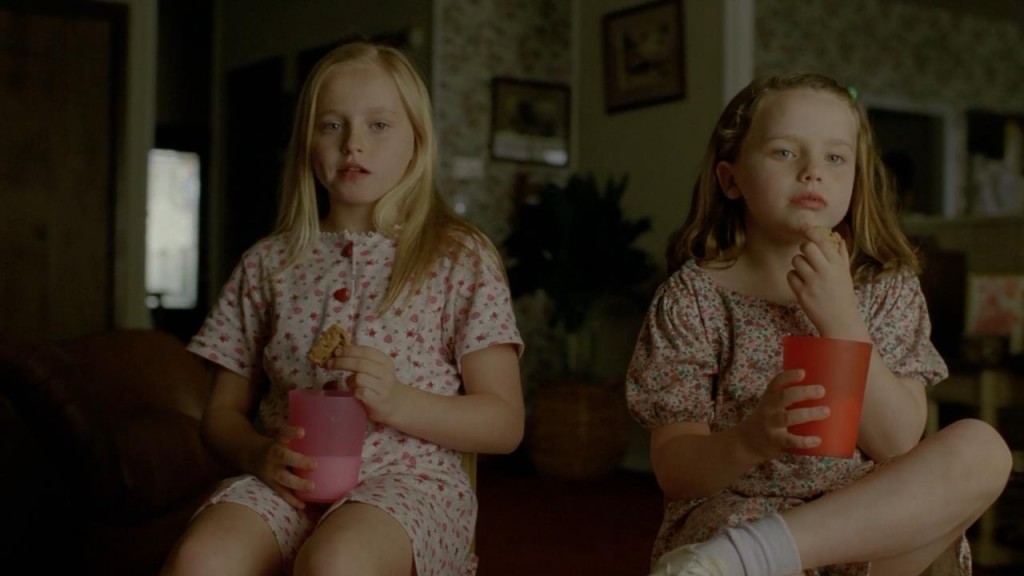
![true.detective.s01e05.hdtv.x264-killers.mp4_snapshot_14.55_[2014.02.18_05.17.37]](http://www.unnecessaryg.com/blog/wp-content/uploads/2014/04/true.detective.s01e05.hdtv_.x264-killers.mp4_snapshot_14.55_2014.02.18_05.17.37.jpg)
![TD s01 (7).mp4_snapshot_53.12_[2014.04.17_06.56.21]](http://www.unnecessaryg.com/blog/wp-content/uploads/2014/04/TD-s01-7.mp4_snapshot_53.12_2014.04.17_06.56.21.jpg)
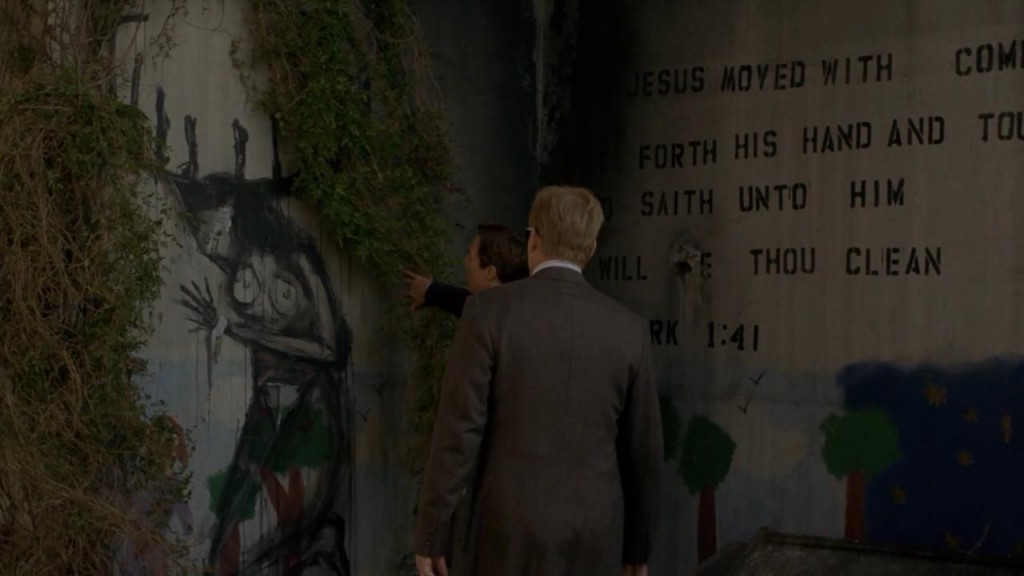
![TD s01 (2).mkv_snapshot_40.12_[2014.04.17_07.05.13]](http://www.unnecessaryg.com/blog/wp-content/uploads/2014/04/TD-s01-2.mkv_snapshot_40.12_2014.04.17_07.05.13-1024x576.jpg)
![TD s01 (6).mp4_snapshot_26.59_[2014.04.17_07.10.24]](http://www.unnecessaryg.com/blog/wp-content/uploads/2014/04/TD-s01-6.mp4_snapshot_26.59_2014.04.17_07.10.24.jpg)
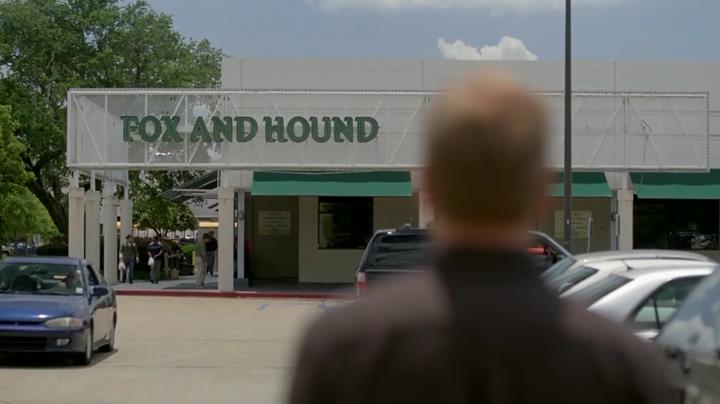
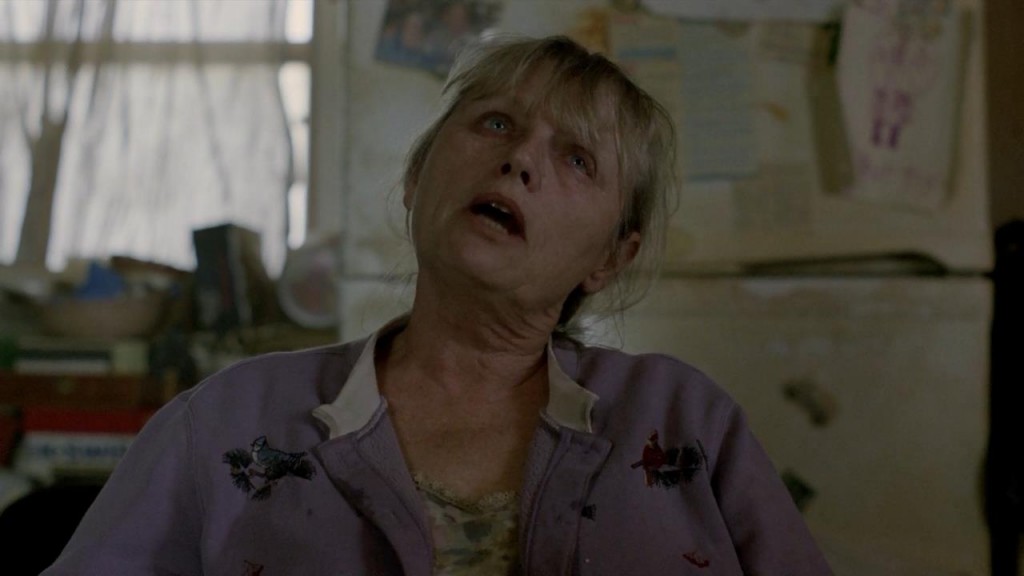
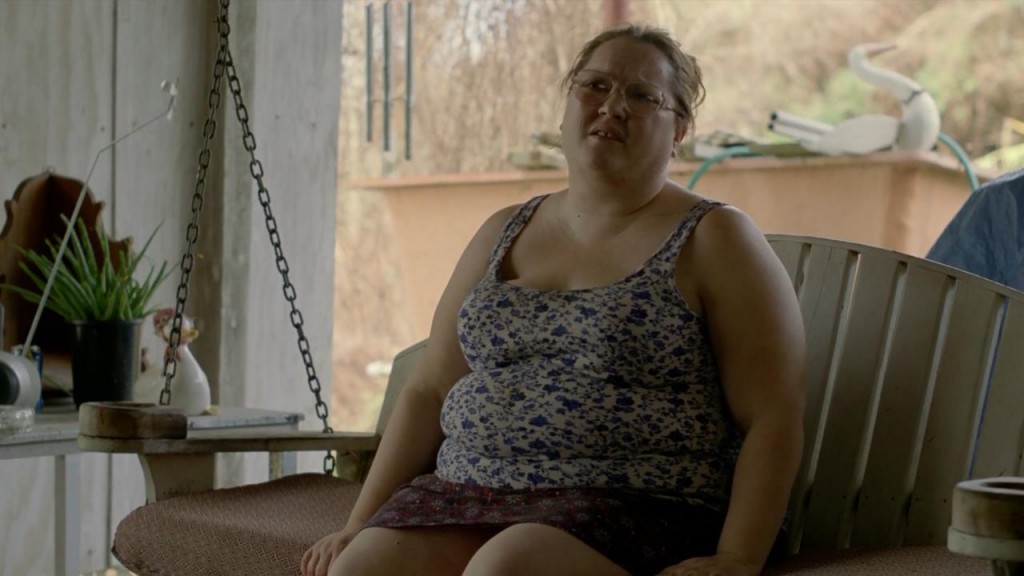
![true.detective.s01e05.hdtv.x264-killers.mp4_snapshot_22.01_[2014.02.18_05.27.13]](http://www.unnecessaryg.com/blog/wp-content/uploads/2014/04/true.detective.s01e05.hdtv_.x264-killers.mp4_snapshot_22.01_2014.02.18_05.27.13.jpg)